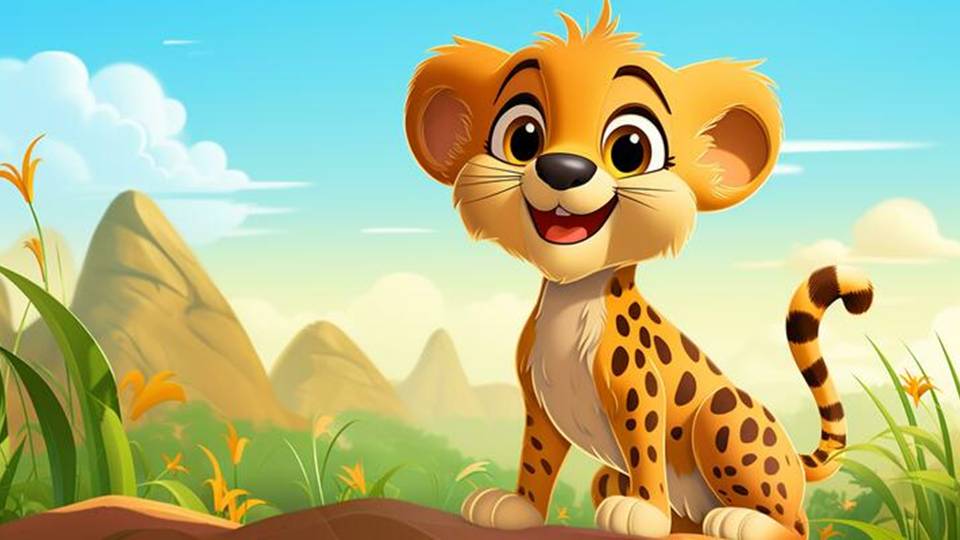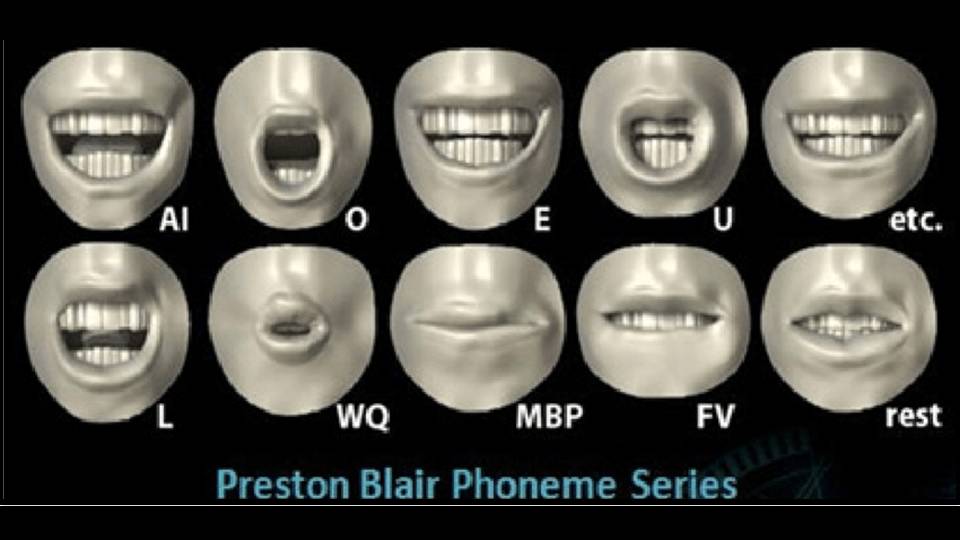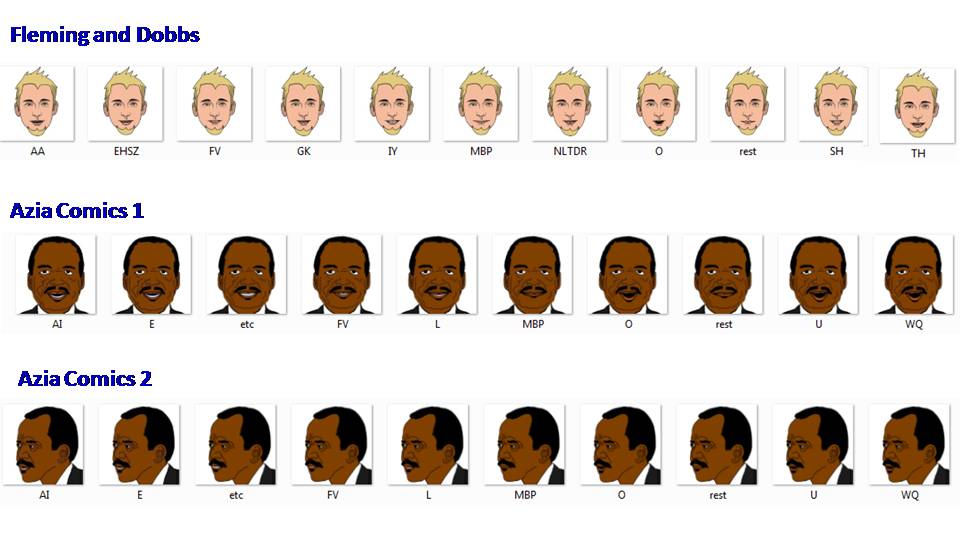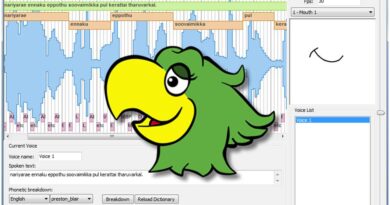Mouth shapes in Papagayo- NG

Basic Animation
Animation is the process of creating movement for characters, objects and environments to express ideas and thoughts. Animation is especially useful in creating marketing videos, advertisements, games, educational videos and cartoon movies.
The Animation is divided into 2D animation and 3D animation, based on the workspace. The 2D animation can be created in a two-dimensional workspace with the help of computer-aided software or the traditional hand-drawn method.
The 3D animation is the movement of objects in a three-dimensional space, showing a realistic view of animation. Also creating 3D animation by hand drawing is very difficult and requires highly skilled animators. Nowadays, computer-aided software are available to create 2D animation in a short amount of time.
Major parts in 2D and 3D Animation
The 2D and 3D animation has three main major parts, which capture the audience’s attention and tells the theme of the story (animation).
- Motion of the objects or Characters
- Posture of Characters
- Conversation of Characters
- Motion of the objects or Characters1
The movement of objects or characters in 2D animation plays an important role in entertaining the audience and it attracts attention. The Movement can be background movement, zoom in, and zoom out and movement of objects as same like characters in real life.
2. Posture of Characters
The posture of character conveys the appeal of the characters with dialogue or conversation. It consists of standing, sitting, sleeping, smiling, emotional postures and facial expressions.
The posture of character in animation helps the viewer to understand the feelings, emotions of characters without dialogue.
3. Conversation of Characters
The dialogue between the characters keeps the audience engaged with the animation. It conveys the main theme and story of the animation to the audience. The Conversation should be in the language of the audience for better engagement and understanding.
Since the conversation plays major role in storytelling and audience engagement.

Most animators focus mainly on conversation and dialogue because the success of animation lies in its dialogue.
The conversation between characters made in the animation by mouth movements, according to the voice played in background. The Mouth movement is created with different mouth shapes over the time frame.
Mouth shapes in Earlier days:
The mouth shapes are very important for conversation or dialogue expressions. The mouth shapes must be synchronized with the background voice, making the animation realistic for the audience.
The voice contains words or letters that will be represented in in the animation as a mouth shapes with background voice. In earlier days mouth shapes were hand drawn for each frame. Each frame has different mouth shapes corresponding to the voice or words.
The mouth shapes for different words are classified into two types.
- Preston Blair Method
- Flemming & Dobbs
- Preston Blair Method:
Preston Blair is a professional animator who has worked for Disney and MGM. He standardized the mouth shape for animation according to mouth expression.
It was globally accepted and is still followed today by most professional animators. The Preston Blair Chart contains a collection of mouth shapes with the help of English words to create lip syncs.

The mouth shapes will be ordered and displayed frame by frame according to the background voice. This makes effective conversation between characters.
B. Flemming & Dobbs Method:
Billl Fleming and another author Darris Dobbs are created and defined the set of mouth shapes for animation. this helps professional animator to create realistic facial expressions and emotion that synchronise with voice.
Bill Fleming and Paris Dobbs used the weighted morphs target technique to create facial expressions and mouth shapes. And they created facial expressions for emotions such as sadness, excitement, happiness, and bitterness. Also the Bill Fleming and Paris Dobbs method was developed for detailed relationships between eye, mouth and jaw movements for effective face and mouth animation.

Nowadays lots of lip synchronization software’s are available for professional animator for their large project. These lip synchronization software’s help the animator reduce time and effort while creating a quality mouth shape for animation.
Also read: How to Use Papagayo-NG in Synfig Studio for Lip-Sync Animation
The Lip sync software is available in the market at a premium price or for free. These software’s can create lip sync in 2D and 3D animation environments.
- Adobe animator
- Crazy talk animator
- Papagayo-NG
- Blender
- Maya
Advantages of Mouth Shapes used in Papagayo-NG
- Makes realistic facial Animation.
- Attention to Audience.
- Quality and improved Animation
- Conveying emotions
Mouth Shapes used in Papagayo-NG

- Mouth 1
- Mouth 2
- Gary C Martin
- Preston Blair
- Flemming & Dobbs
- Azia Comics 1
- Azia Comics 2

Conclusion:
The different set of Mouth shapes in Papagayo NG offers more options where animator can choose according to the their project requirement. This helps the animator to create a quality and effective facial animation for their project.
This software are also capable to export the mouth shapes into 2D and 3D animation software.
Finally, this Papagayo-NG software is very helpful for animators and beginners to create lip sync animation for free with minimal effort.
I hope this article is helpful for you.
Also Read : Synfig Studio Review – The Best Alternative 2D Animation software for Adobe Animate




